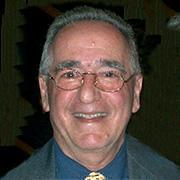Publications
Pick, E. When charge is in charge - "Millikan" for leukocyte biologists. J. Leukoc. Biol. 87, 537-540, 2010
Mizrahi, A., Berdichevsky, Y., Casey, P. J., and Pick, E. A prenylated p47phox-p67phox-Rac1 chimera is a quintessential NADPH oxidase activator. Membrane association and functional capacity. J. Biol. Chem. 285, 25485-25499, 2010
Hayee, B., Antonopoulos, A., Murphy, E. J., Rahman, F. Z., Sewell, G., Smith, B. N., McCartney, S., Furman, M., Hall, G., Bloom, S. L., Haslam, S. M., Morris, H. R., Boztug, K., Klein, C., Winchester, B., Pick, E., Linch, D. C., Gale, R. E., Smith, A. M., Dell, A., and Segal, A. W. G6PC3 mutations are associated with a major defect of glycosylation: A novel mechanism for neutrophil dysfunction. Glycobiology 21, 914-924, 2011
Pick, E., and Dahan, I. Strategies for identifying synthetic peptides to act as inhibitors of NADPH oxidases, or "All that you did and did not want to know about Nox inhibitory peptides". Cell. Mol. Life Sci., 69:2283-305, 2011
Bosco, E., Marchioni, F., Kumar, S., Biesiada, J., Kordos, M., Szczur, K., Meller, J., Seibel, W., Mizrahi, A., Pick, E., Filippi, M-D., and Zheng, Y. Rational design of small molecule inhibitors targeting the Rac GTPase - p67phox signaling axis in inflammation. Chem. Biol., 19:228-242, 2012
Dahan, I., Molshanski-Mor, S., and Pick, E. Inhibition of NADPH oxidase activation by peptides mapping within the dehydrogenase region of Nox2-A “peptide walking” study. J. Leukoc. Biol., 91:501-515, 2012
Dahan, I., and Pick, E. Strategies for identifying synthetic peptides to act as inhibitors of NADPH oxidases, or "All that you did and did not want to know about Nox inhibitory peptides". Cell. Mol. Life Sci. 69, 2283-2305, 2012
Roos, D., van Buul, J. D., Tool, A. T. J., Matute, J. D., Marchal, C. M., Hayee, B., Köker, M. Y., de Boer, M., van Leeuwen, K., Segal, A. W., Pick, E., and Dinauer M. C. Two CGD families with a hypomorphic mutation in the activation domain of p67-phox. J. Clin. and Cell. Immunol. in press, 2014
Chapter/Review
Pick, E., Cell-Free NADPH Oxidase Activation Assays - "In Vitro Veritas", In Neutrophil Methods and Protocols, 2nd Edition (Quinn, M. T., and DeLeo, F. R., eds), 339-403. Humana Press, 2014
Pick, E., Role of the Rho GTPase Rac in the activation of the phagocyte NADPH oxidase: Outsourcing a key task. Small GTPases, 5(1), 2014
Bechor, E., Dahan, I., Fradin, T., Berdichevsky, Y., Zahavi, A., Federman Gross, A., Rafalowski, M., and Pick, E. The dehydrogenase region of the NADPH oxidase component Nox2 acts as a protein disulfide isomerase (PDI) resembling PDIA3 with a role in the binding of the activator protein p67phox. Front. Chem. 3:3, 2015
Dahan, I., Smith S. M. E., and Pick, E. A Cys-Gly-Cys triad in the dehydrogenase region of Nox2 plays a key role in the interaction with p67phox. J. Leukoc. Biol. 98: 859-874, 2015
Pick, E. Absolute and relative activity values in assessing the effect of NADPH oxidase inhibitors. Antiox. Redox Signal. 23: 1250-1251, 2015


